Holiday shopping has come a long way, and it’s happened fast. Really fast.
In 2013, Cyber Monday sales hit $2.29 billion — easily a new single-day record.
Now, that looks like kids stuff.
This year’s Singles Day, China’s annual online shopping bonanza held on Nov. 11, generated more than $7 billion in the first 30 minutes, part of a $25 billion day.
What does this tell us about online holiday shopping? First, it’s big and quickly getting bigger.
Second, this is not just an American thing. US-born Cyber Monday may have launched ecommerce holiday shopping to new heights, but the world has caught on.
Online store owners are in prime position to capitalize on the global holiday shopping boom. Sure, there are some challenges. Some of your shoppers will be halfway around the world, and you might not speak the same language.
But holiday shopping is a huge opportunity. This post will look at some of the biggest shopping holidays from around the globe, and then break down exactly how you can tap into the holiday shopping frenzy.
Post Contents
- Black Friday and Cyber Monday
- Mother’s Day
- Green Monday
- Christmas Day
- Boxing Day
- Diwali
- White Day
- Children’s Day
- How to Capitalize on Shopping Holidays
- Use Geo-Targeting Tools for Holiday Shopping Ads
- Study Hot Items For Specific Shopping Holidays
- Dropshipping Can Simplify Holiday Shopping Campaigns
- Target Mobile for Holiday Shopping
- Make Your Marketing Relevant for Holiday Shopping
- Target Younger Holiday Shopping Audiences
- Holiday Shopping Conclusions
- Want to learn more?
Black Friday and Cyber Monday

Let’s start with a few classics: Black Friday and Cyber Monday.
US ecommerce sales on Black Friday 2016 were predictably massive, hitting $3.34 billion. Our Black Friday fact research found that it even surpassed in-store purchases.
European sales went gangbusters, too. The UK, for instance, totaled $1.62 billion in online Black Friday sales. Norway, Sweden, Denmark and Finland are among the countries where Black Friday is the biggest online shopping day.
And of course Cyber Monday continues to be a conversion vehicle. In the US, Cyber Monday 2016 was the first day to see $1 billion-plus in mobile sales.
We could go in detail by sharing Cyber Monday and Black Friday tips, but you know the story. So let’s keep moving and check in on some other big shopping holidays. While they take a backseat to Black Friday, Cyber Monday and Singles Day, they have a proven record of driving sales and should be on your holiday shopping calendar.
Mother’s Day
Mother’s Day is the third biggest retail holiday in the US, with speciality retailers logging nearly 200% more revenue in the run-up to Mother’s Day than the weeks following.
Most countries celebrate Mother’s Day alongside the US on the second Sunday of May, including ecommerce players like Germany, India, Japan and China. There are, however, plenty of big online shopping markets where Mother’s Day falls on a different day:
- UK and Ireland: Fourth Sunday in Lent (March 11, 2018)
- Spain: First Sunday in May (May 6, 2018)
- France and Sweden: Last Sunday of May (May 27, 2018)
Think global. There is no rule against generating sales for four different Mother’s Days.
Green Monday
Green Monday is a shopping holiday concocted by eBay. It typically falls on the second Monday of December — this year, that’s December 11.
Sometimes called Cyber Monday 2, Green Monday generated $1.62 billion in online shopping sales in the US in 2016.
Last year Green Monday was also the biggest day for online shopping in the Netherlands, Belgium and Austria.
Christmas Day

December 25th is a sneaky popular shopping holiday, and it’s getting bigger. Some of that is driven by mobile shopping: Family get-togethers might pull people away from their computers, but not their phones.
Adobe highlighted this phenomenon last year, pointing out that Christmas Day would account for more mobile revenue than both Black Friday or Cyber Monday. There are few days where mobile ads are more likely to stick – more on that in a minute.
Christmas shopping may start with Black Friday and Cyber Monday, but it doesn’t end on Christmas morning.
Boxing Day
Much of the English-speaking world celebrates Boxing Day — always December 26th — including the UK, Canada, Australia, South Africa, and New Zealand.
The conditions are just right for a big shopping holiday: People are off work, there are gift certificates floating around and it’s the perfect time to snag anything that Santa forgot to bring the day before.
The 26th is big for holiday shopping even in countries that don’t celebrate Boxing Day. Germany, for example – the fifth-biggest ecommerce market in the world – calls December 26 “Second Christmas Day.” Shoppers hop back online after a dip on the 25th:
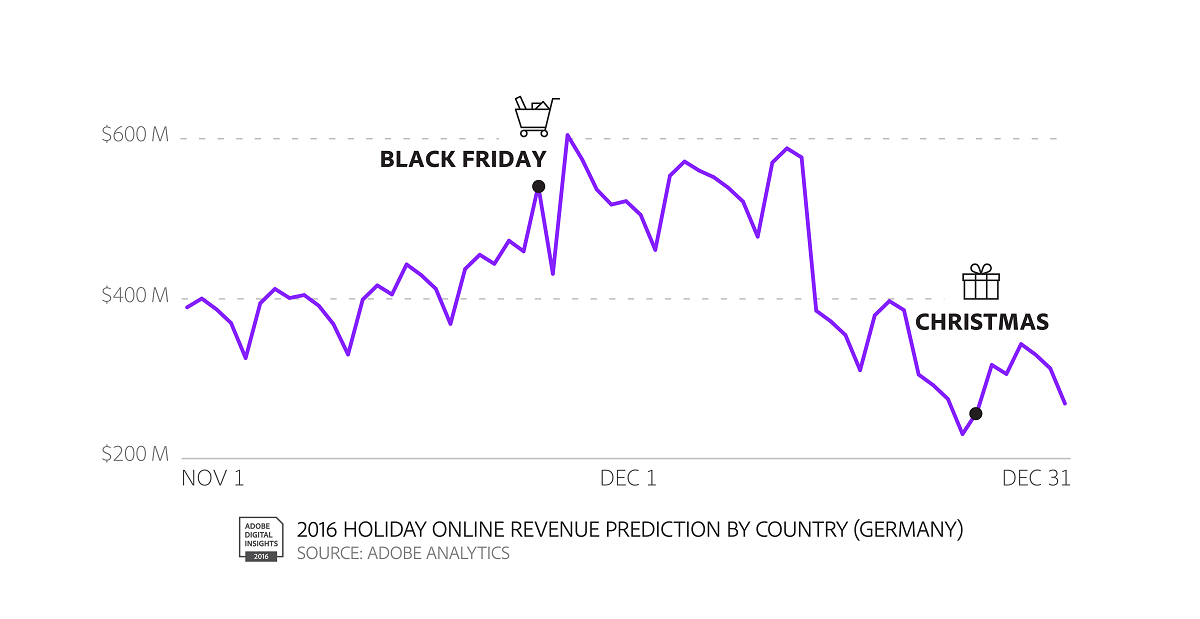
Alright, these next three shopping holidays might seem a bit obscure, but there is huge potential.
Diwali
Diwali, India’s Festival of Lights, is the nation’s biggest shopping holiday of the year. IndiaOnlineSeller.com called the five-day Diwali festival “the happiest days in the ecommerce calendar.”
Diwali spending was estimated at nearly $2 billion in 2016, with popular items ranging from electronics like smartphones and tablets to footwear to watches and jewelry.
India is a Top 15 ecommerce market and growth is expected to explode in the coming years. It’s fertile for holiday shopping.
Diwali occurs annually at the end of the lunar month of Ashvin and the start of Kartika. What — you don’t know Ashbin and Kartika? Then just remember that it usually falls about a month before Black Friday. It started in mid-October in 2017, and will kick off in early November in 2018.
White Day
White Day happens every year on March 14 — one month after Valentine’s Day. White Day launched in Japan and has now spread to other Asian countries, including South Korea, Vietnam and China.
In Japan, Valentine’s Day is traditionally when women give gifts to men. White Day is guys’ chance to return the favor. As a result, it’s a massive shopping holiday, especially given Japan’s enormous ecommerce market.
China and South Korea join Japan as Top 10 ecommerce markets, so White Day is a shopping holiday for store owners to remember.
Children’s Day
There are variations of Children’s Day all over the world, but the country with the biggest ecommerce bump is Brazil, which celebrates kiddos on October 12.
Brazil drops hundreds of millions of dollars on ecommerce sites every Children’s Day. It’s such a big deal that the Brazilian Institute of Economics issued a 2017 report about the ecommerce boom around Children’s Day.
And if you don’t sell toys, don’t worry. Children’s Day is a shopping holiday for all ages: Cosmetics, mobile phones, kids clothing and home appliances were all more popular holiday shopping items than toys.
How to Capitalize on Shopping Holidays
OK, so those are some of the biggest days for holiday shopping around the world. Now the hard part: How do you actually capitalize on them?
These shopping holidays might be happening in countries where you don’t typically do marketing, or where English isn’t the native language. Plus the holidays might be really, really far away, which can complicate shipping.
We understand. So here are some simple ways to navigate these challenges and use shopping holidays to generate sales from India to Germany to Brazil.
Use Geo-Targeting Tools for Holiday Shopping Ads
Lots of your marketing tools come equipped with geo-targeting — location-based filters and segmentation options for targeting specific markets. Geo-targeting lets you avoid promoting, say, Boxing Day in the US, where “Boxing Day” might be mistaken for a heavyweight fight.
Let’s take a look at a few examples. Here’s how Facebook does it. When you set up a campaign, you can target everybody in a certain location, ranging from big (like “United States”) to small (like “United Boulevard,” which is a street in western Canada).
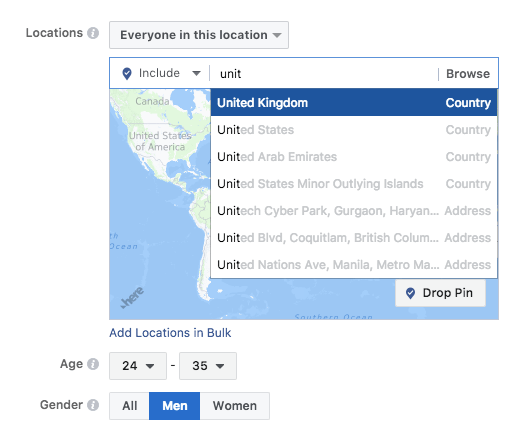
Facebook gives you even more granular options. Here you can select from criteria like “Emerging Markets” and “Euro area”:
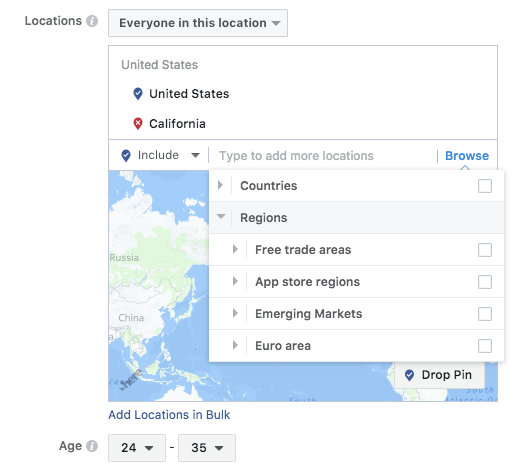
And here you can drop in a specific address, and then build a radius around that address.
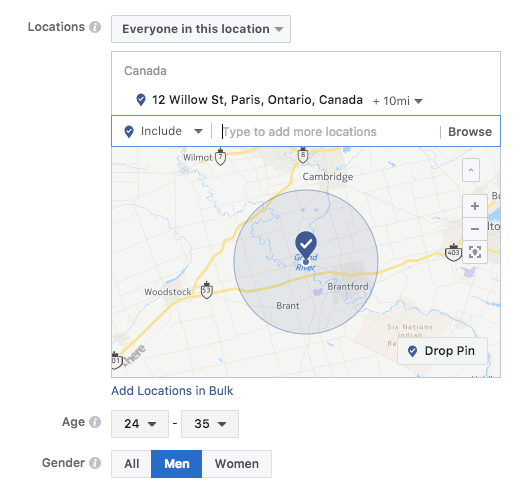
AdWords has the same sort of geography-based options. For a holiday shopping campaign targeted at British consumers, you could create a filter like this:
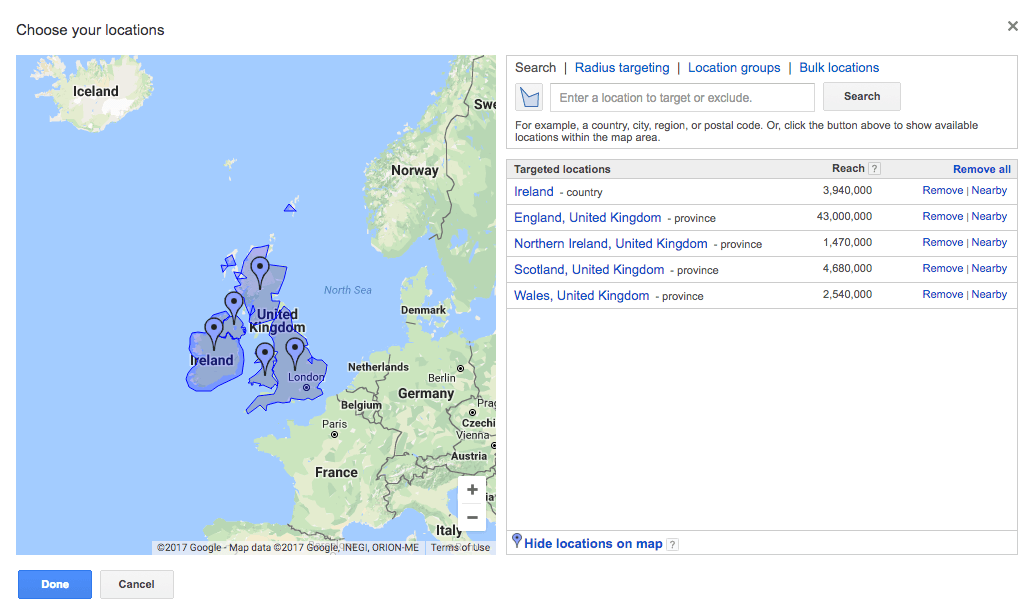
Geo-targeting is awesome for holiday shopping campaigns. Especially because data surrounding holiday shopping patterns is getting so precise. Here, for example, is a projection from Facebook Data Scientist Santanu Bhattacharya that predicts Diwali spending by city:
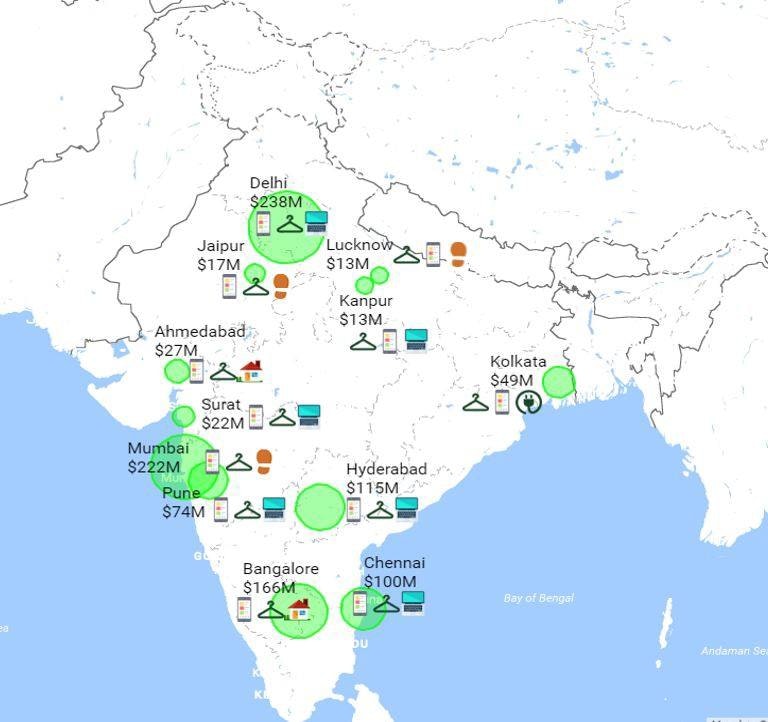
This information is so valuable because shopping in countries like India and Brazil is not evenly distributed. Just look at the expected breakdown of Diwali spending:
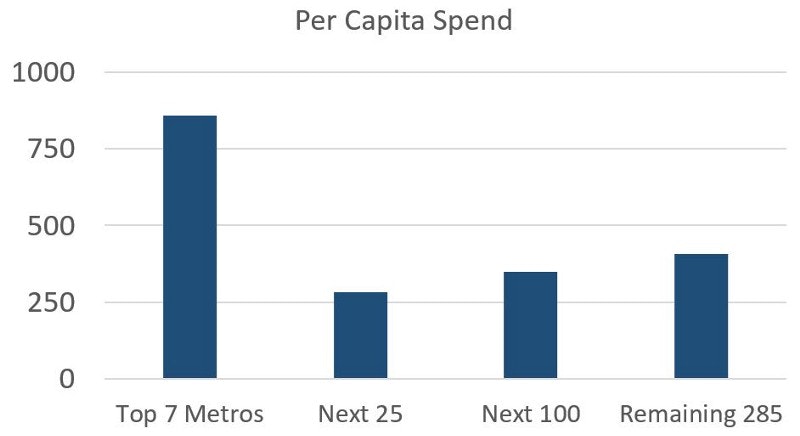
Geo-targeting options will be available on most of your tools. You can build segments based on country info with an email provider you can fire layers and popups for certain locations with OptinMonster. These features are becoming standard, and they can be leveraged to put your shop on the map for holiday shopping around the world.
Study Hot Items For Specific Shopping Holidays
If you’re going to get a slice of holiday shopping in different markets, it’s vital to understand exactly what people are looking for. Hot holiday shopping ideas for Mother’s Day in Ireland might be totally different than holiday shopping ideas for White Day in South Korea.
Some online sleuthing should help you identify hot products in different markets. But do the sleuthing! It’s not always obvious what’s going to be a hot products. As we discussed earlier, Brazil’s Children’s Day isn’t all about toys: Mobile phones and cosmetics are hot sellers during the holiday shopping period.
Dropshipping Can Simplify Holiday Shopping Campaigns
Suppose you and your inventory are based in North America. Targeting North American consumers on North American shopping holidays is nice because it streamlines shipping. Meanwhile, shipping to Japan, India, or Germany might be expensive and slow.
This is where dropshipping comes in. Dropshipping lets you avoid the headaches and costs associated with getting products from your inventory to holiday shoppers on the other side of the world. Dropshipping marketplaces like Modalyst let you sell products in your store without actually holding the inventory.
If you use this method, just remember to feature your dropshipping items in your holiday shopping ads. You can nudge your target groups in Europe, South America, Asia or wherever towards specific products that won’t carry huge delivery costs.
Target Mobile for Holiday Shopping
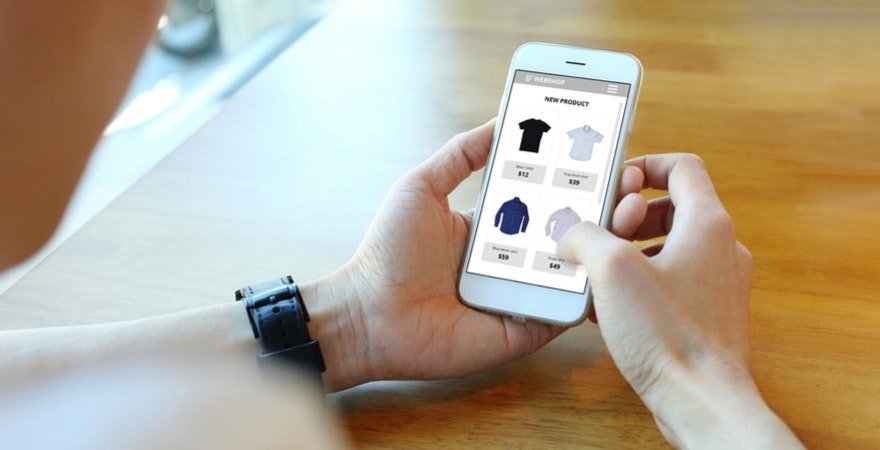
Yeah, this is a no-brainer. But holiday shopping on mobile is exploding.
In 2016, for instance, mobile devices accounted for 36 percent of Black Friday holiday shopping.
In Brazil, about 20% of all online purchases are happening via smartphone, and in Japan mobile accounts for about half of all ecommerce transactions.
So capitalizing on holiday shopping might mean targeting users with mobile ads, which is something that most of your marketing tools will enable you to do. This is AdWords:
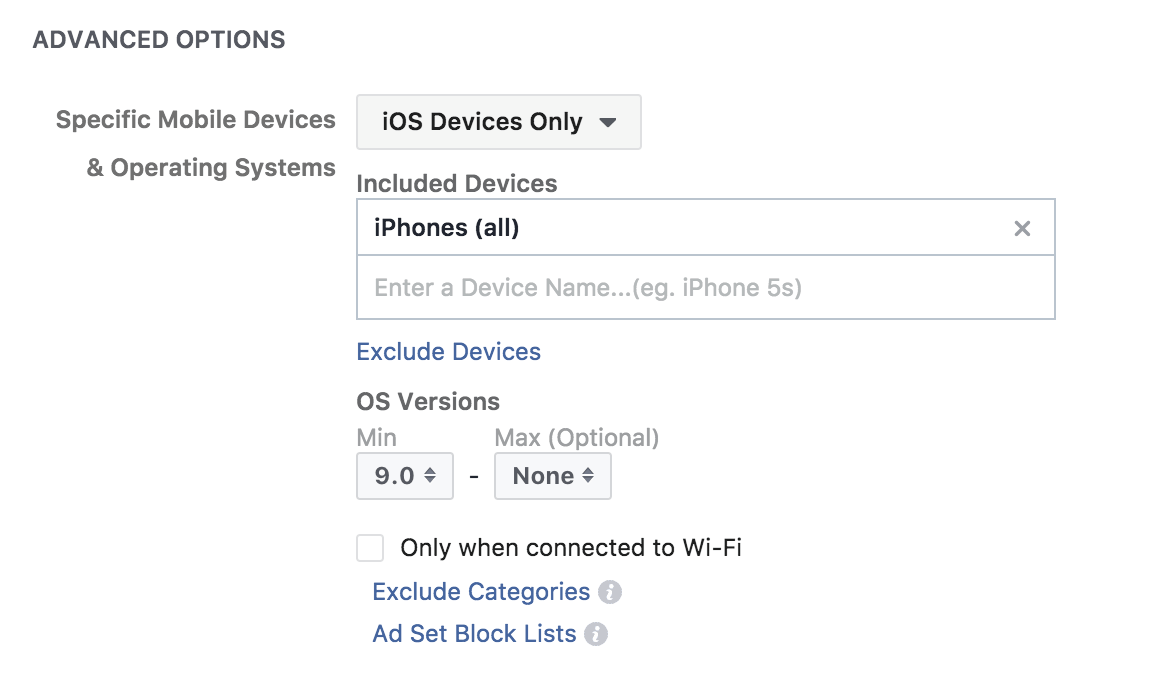
Make Your Marketing Relevant for Holiday Shopping
Let holidays influence your marketing and the types of deals you offer. For example, even if you’re pushing a product that always has free shipping, remind shoppers that there’s Free holiday shipping!
You could also drive holiday shopping sales by offering holiday discounts, and ensuring that products will arrive in time for the holidays.
And don’t forget that holiday shopping revolves around, well, the holiday. In India, the Diwali holiday season inspired an estimated 174 million online searches containing the word “diwali.” Products, content and ads that mention Diwali will have a leg up.
Target Younger Holiday Shopping Audiences
Holiday shopping is for all ages, but younger consumers are a better bet than older ones.
For starters, their English is better. The reasons vary per country. In Germany, for instance, lots of adults were taught Russian in school, not English. That’s no longer the case. In China, middle class growth has led to an explosion of English schools. And in countries like the Netherlands, Denmark and Sweden, the 18-35 cohort grew up watching English language television. An English ad for your store is much more likely resonate with young audiences in these countries.
Of course, if you have a Portuguese shop and you want to target Brazil on Children’s Day, stick with Portuguese. But if you are Dutch and you want to reach someone in Japan, English is your best bet.
And of course, Millennials are the prized demographic for online shopping. In the US, for instance, Millennials spend more money online than any other age group. That sort of trend holds up in Europe and in China.
Holiday Shopping Conclusions
It’s not always easy to market products to someone on the other side of the world. But when it comes to holiday shopping, there are so many things working in your favor. So remember:
- People shop online during the holidays. Lots. America’s embrace of Black Friday and Cyber Monday revolutionized holiday shopping, and you can bring that same urgency to other holidays in other markets.
- Marketing tools enable precise targeting. You can reach specific countries, or even specific cities and neighborhoods, to get your products in front of consumers who have holiday shopping on their minds.
- Holiday shopping is also getting way easier with the non-stop evolution of mobile ecommerce. Shoppers feel more and more comfortable making purchases via mobile devices, and data shows this is especially true during holiday shopping seasons.
- Finally, English is shrinking the gap between you and your potential customers. There are 45 countries where at least half the population speaks English. If you are clever with targeting, you can reach English speakers wherever they are.
Have you had success marketing your store abroad? Are there some big shopping holidays that we forgot about? Drop us note in the comments!
Want to learn more?
- How to Get More Sales With Ecommerce Conversion Optimization
- How to Make Sales From Impulse Buyers
- 50 Ecommerce Tips for New Entrepreneurs
- How to Have a Sale Which Makes Your Business Money



